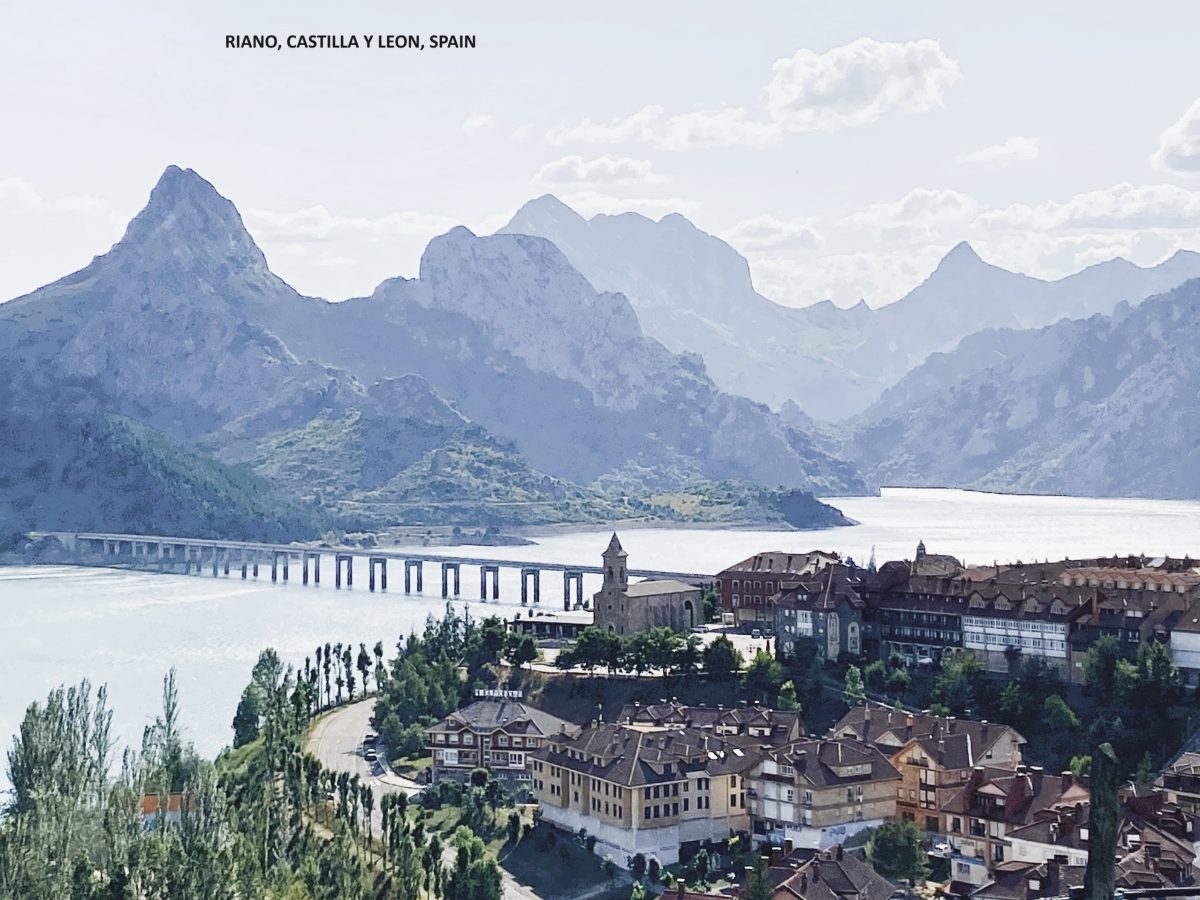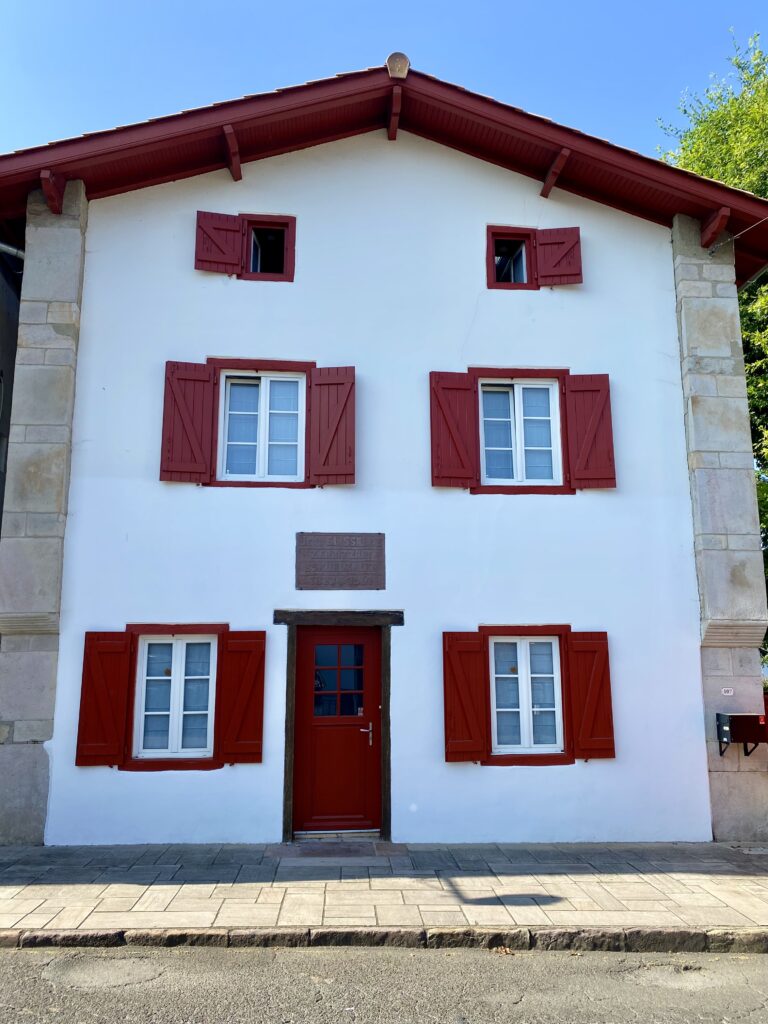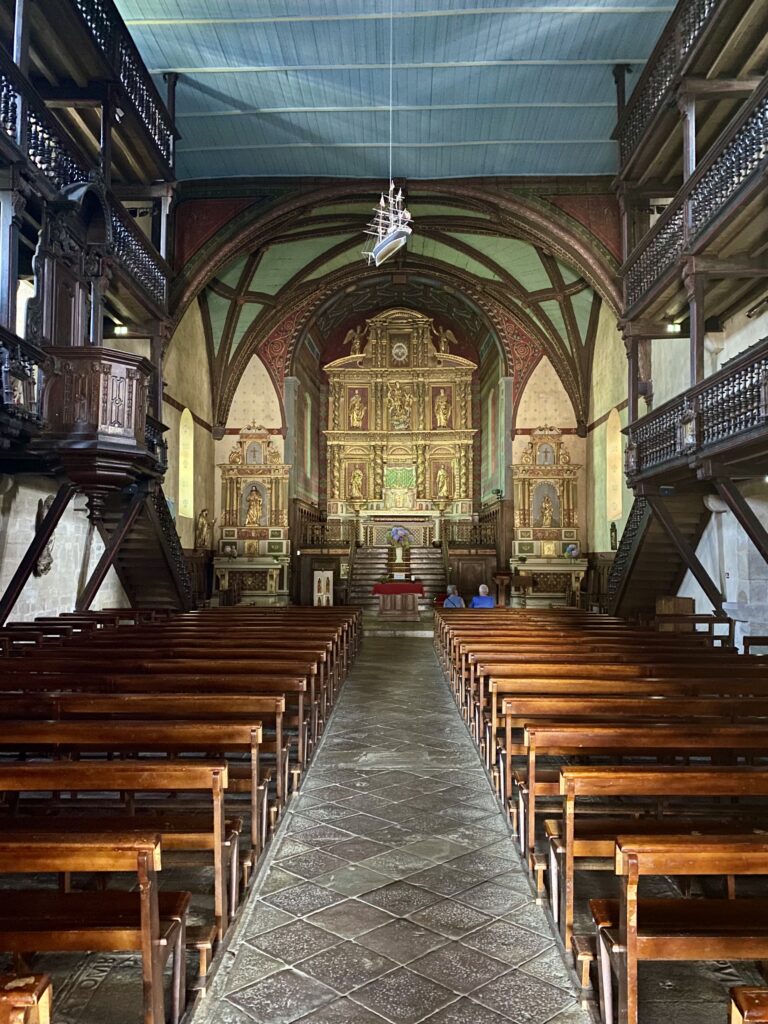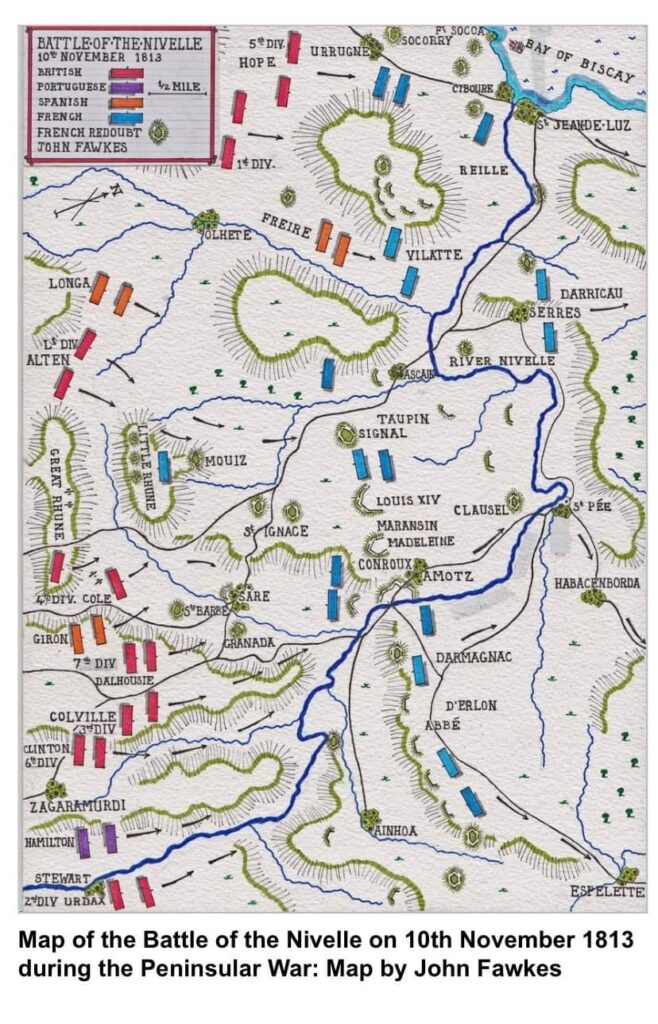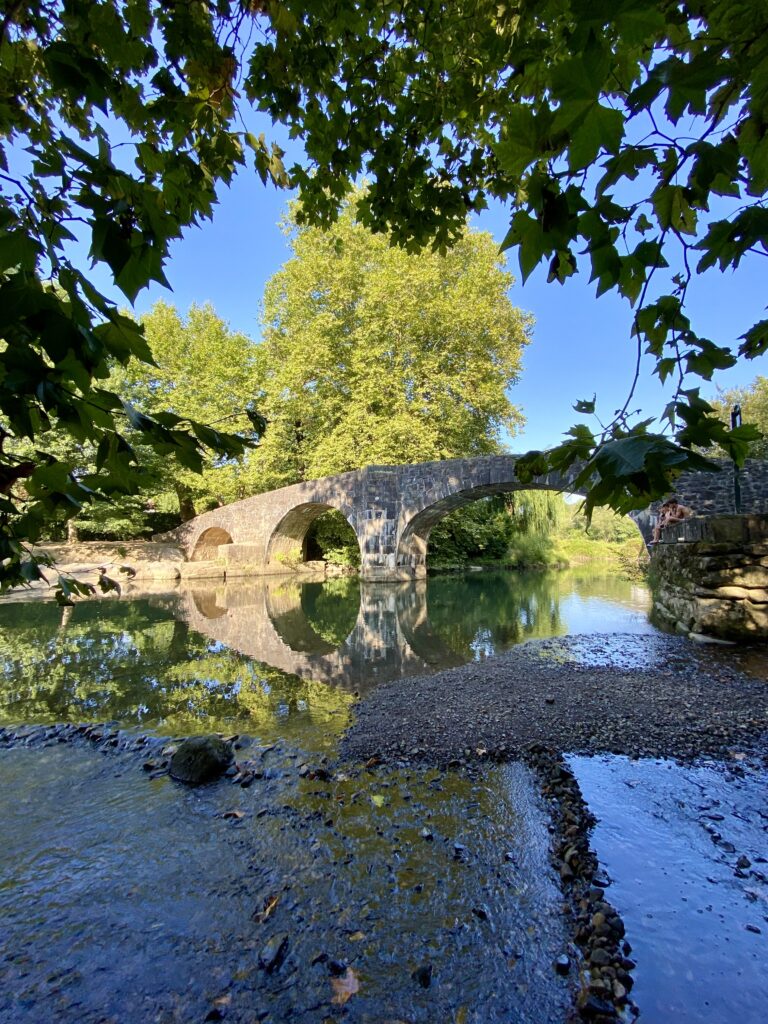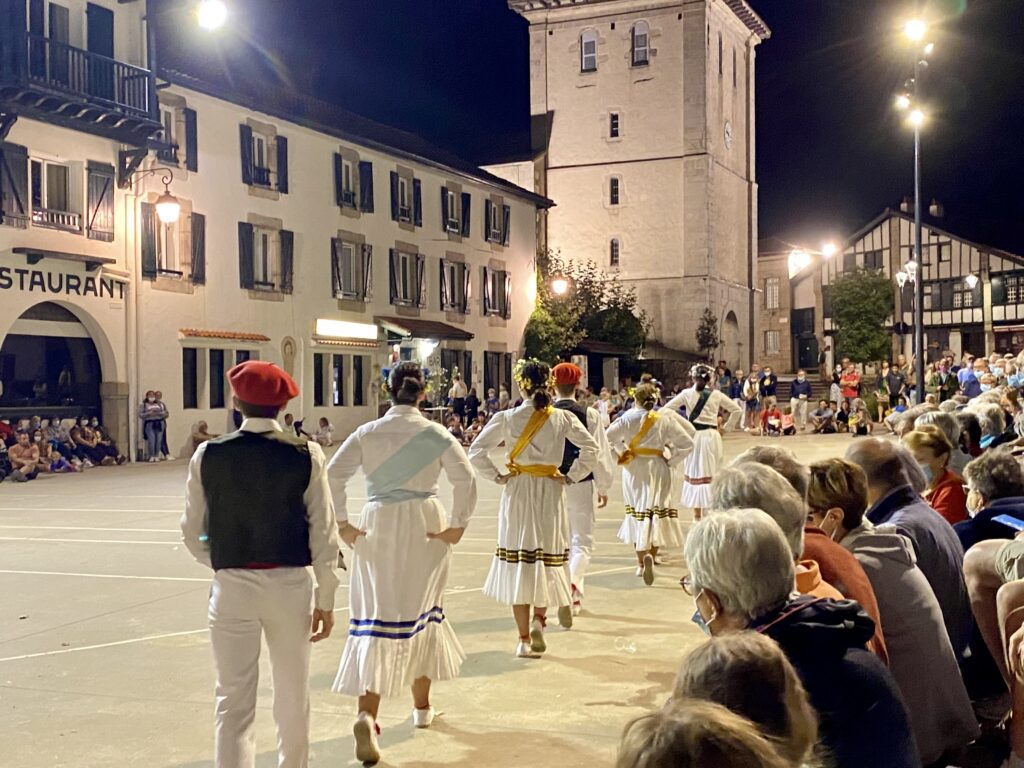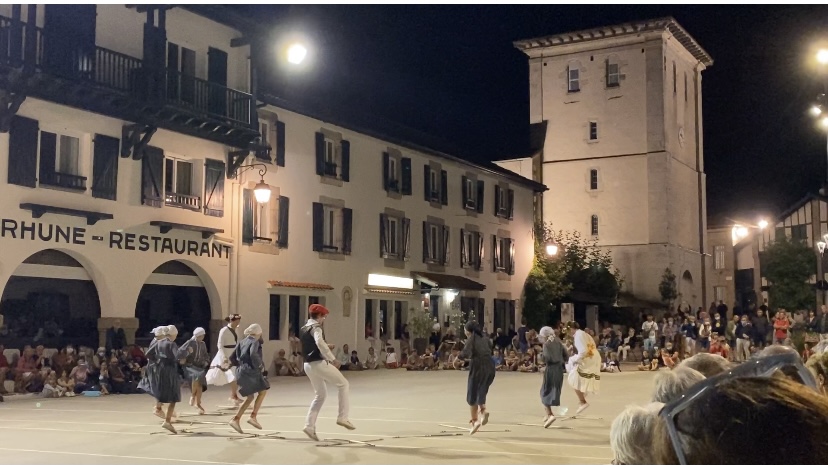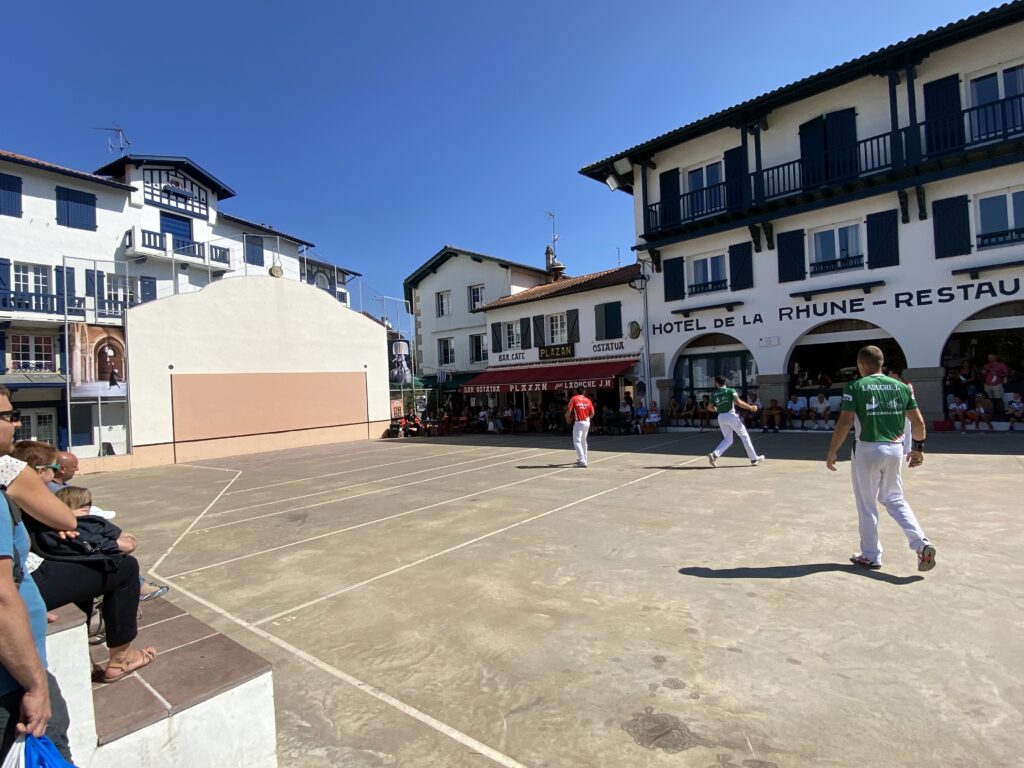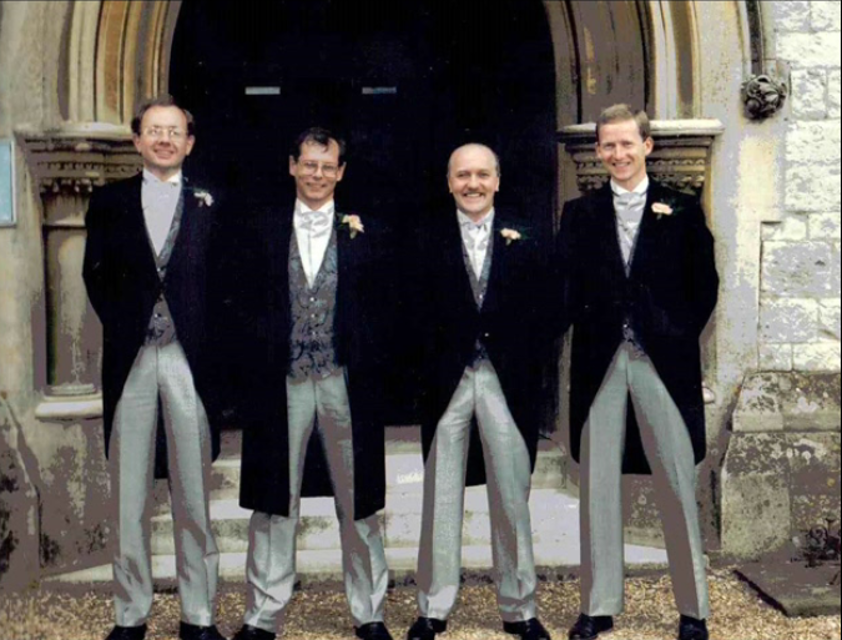Ascain is a very pretty small town (or is it a large village?) besides the River Nivelle on the French side of the Pyrenees. It sits under the 905m Pyrenean summit of Rhune, just a few kilometres from the Atlantic coast, in the former Basque Region of Labourd, now referred to as the Pyrenees Atlantique Department of Nouveau Aquitaine. I prefer Labourd.
If you are so inclined, there’s an easy walk up to the summit of the Rhune or there is a 35 minute train ride up. I’m told that at the top you can sit outside a cafe and take in splendid views over Bayonne and Hendaye. Anyone who knows me will also know that I wasn’t going to waste my time with such a trip. I don’t care how good the views are; I cannot stand trains and cafes on hills. It is probably the one thing I hate more than bloody wind farms.
No, I spent the afternoon at something approaching sea level exploring the wonderfully picturesque ‘village’ and checking if my newly acquired Covid Sanitaire QR Code Pass would be accepted in the local bars. Dealing with those points in reverse order, two bars were quite happy to serve me alcohol after checking my pass. As for the village, it is lovely. Almost all of the houses are typical low roofed, half timbered properties with stone lintels and almost all are painted in the Basque colours of white, red and green. They are very proud of their Basque heritage here.
In villages such as this the main square is more often than not dominated by the local church but in Ascain the honours are shared between the church and a Basque Pelota Court. More about Pelota later. The Church of our Lady of Assumption doesn’t look particularly impressive from the outside but inside it is a wholly different matter and the place has some history. Parts of it date back to the Middle ages (and in 1609 the local priest was degraded and burned as a sorcerer by order of the infamous Pierre Lancre who despised anything Basque) but, the church received significant makeovers during the 16th and 17th centuries and was inaugurated in 1626 by no less a personage than Louis XIII. Leaving all that aside, I like to see wooden galleries in a church (they are quite common in this part of the world) and this particular church has three levels of galleries. It is beautiful inside.
Another place I visited in between testing my Covid Sanitaire Pass was the Roman Bridge. It’s not really a Roman bridge although there may well have been one on this site back in Roman times. No, the so called Roman Bridge was erected in the 15th century in the Roman style and then totally rebuilt (in the same Roman style) in the 1990’s after being destroyed by a flood. I think the bridge needs renaming.
What really excited me about this bridge (the 15th century one) is that it was of strategic importance during the French retreat from Spain during the Peninsula War. I’ve long been interested in Napoleonic history and the Battle of Nivelle took place here on 10 November 1813 with the Duke of Wellington decisively beating Marshall Soult. Ascain was, at the start of the battle, the centre of the French defensive line and Taupin’s Division held the village until the British Light Division routed them. You wouldn’t believe it to look at the place now. It is so quiet and peaceful.
Covid Sanitaire Pass working and with me having gained a good lay of the land, it was time to collect Vanya and the dogs and find somewhere to eat.
We timed our arrival back into the town centre perfectly. Indeed, we arrived as the village youth started dancing to traditional basque music in the town square. There was a real carnival atmosphere about the place which continued on into the next day with the annual Pelota Tournament also taking place on the town square.
For the uninitiated (and I had to look this up) Basque Pelota involves players hitting a heavy tennis sized ball against a wall, the frontis, with an open hand (although I understand the game can also be played over a net using different types of rackets) such that his opponent is unable to return the ball. It is the forefather of most racket sports and is played fast and hard. Some aspects of the game are like squash but Basque Pelota is played on a court which is 30 metres long and 10 metres wide and with the winner being the first player or team to score 22 points. I watched the final of the seniors doubles (they were playing first to 30 points) and it looked to be great fun but physically demanding.
So what else is there to say about Ascain. We love the place. So too did Winston Churchill who came here to paint.
Sad thing is, early the next day we learned one of our best mates has died. RIP Dave. Missed but never forgotten. 27 August 2021

